Products You May Like
Personal trainer and physiotherapist Jonathan Cooke recommends this lower abs workout, which uses specific exercises that flex the torso from the bottom up and tilt the pelvis backwards…
The lower abdominals refer anatomically to the lower segment of the abdominal wall (rectus abdominus), which function, along with the upper abdominals, to flex the spine. Research indicates that certain exercises can preferentially activate the lower abdominals to a higher degree than the upper abdominals.
While the upper abs are found to be best worked with ‘top-down’ exercises like traditional sit-ups and crunches, studies have shown that the lower abs are best worked with ‘bottom-up’ exercises that flex the spine by moving the lower body and function to tilt the pelvis backwards.
Related content:
Lower abs workout
(Repeat x 3)
- 1a. Reverse Abdominal Curl
- 1b. Gym Ball Roll-Out
- 1c. Hanging Knee-Up
- 1d. V-Sit
- 1e. Gym Ball Frog
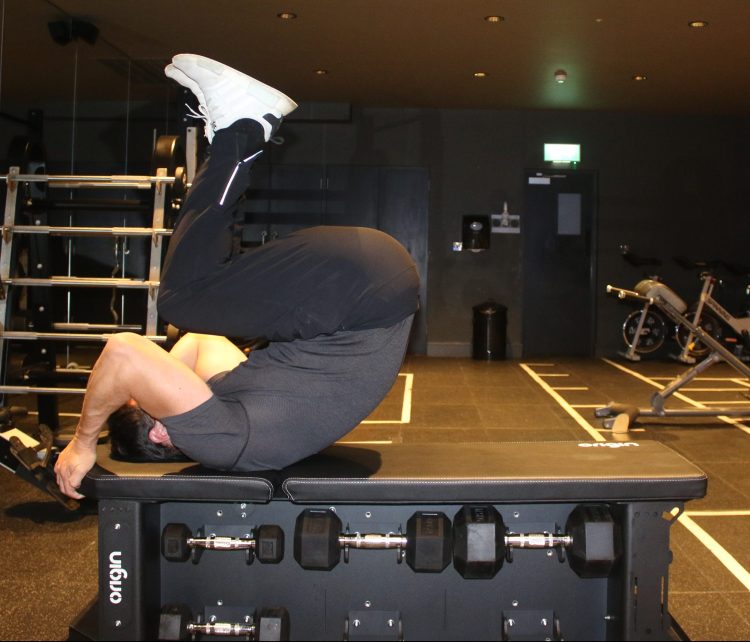
1a. Reverse Abdominal Curl
Reps: 12-15
Rest: 15 secs, then move to 1b
How to perform a reverse abdominal curl:
- Lie on your back on a flat surface with hips and knees bent to about 90 degrees.
- Position your arms flat on the ground or hold onto something secure overhead.
- From this starting position, maximally bend the hips (rolling knees to chest), raising the lower half of the body (including your bum) off the floor as far as possible.
- Control back down to the starting position.
PT tip: To increase the difficulty, add resistance to this exercise by placing a medicine or slam ball between your knees.
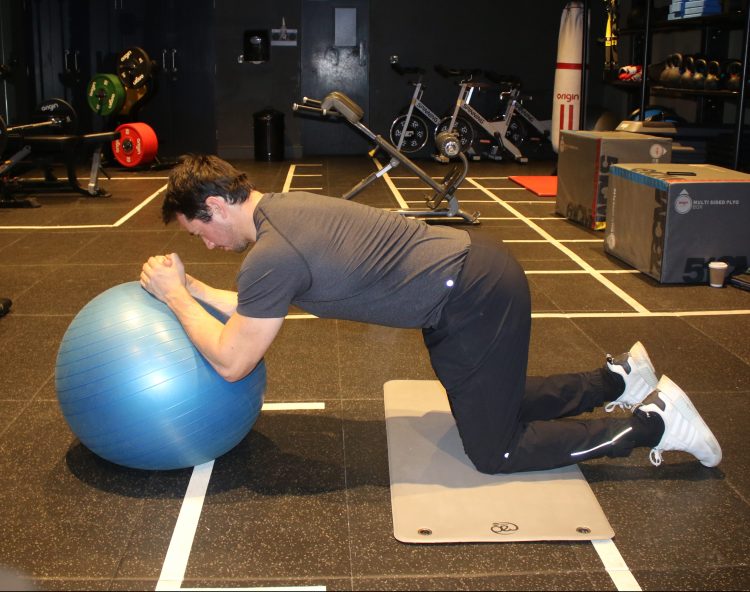

1b. Gym Ball Roll-Out
Reps: 12-15
Rest: 15 secs, then move to 1c
How to perform a gym ball roll-out:
- Start in a quadruped position, on your knees with elbows bent to about 90 degrees and resting on the gym ball with hands clasped.
- Maintain a neutral spine and pelvis.
- Straighten out your body by rolling forward (your legs and arms should straighten simultaneously).
- Keeping your spine neutral spine throughout the entire movement.
- Return back to the starting position..
PT tip: Keep a neutral spine and pelvis by thinking about balancing an imaginary glass of water on your back and roll-out without ‘spilling the glass’.
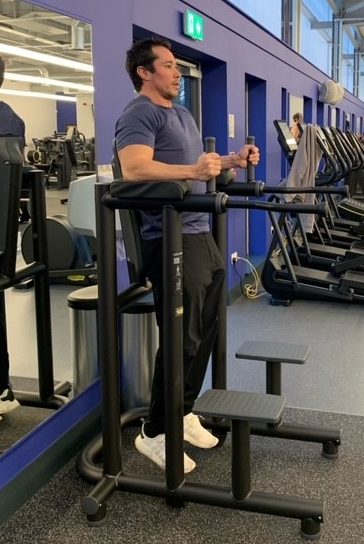
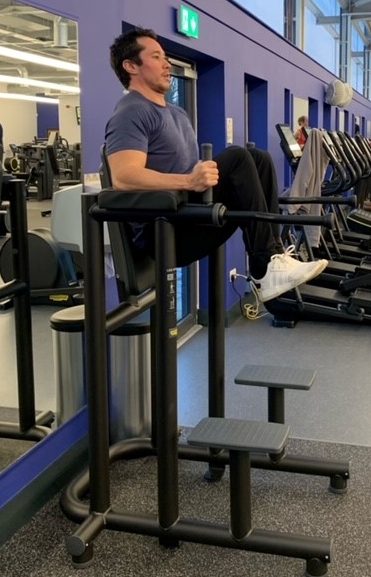
1c. Hanging Knee-Up
Reps: 12-15
Rest: 15 secs, then move to 1d
How to perform a hanging knee-up:
- Start in a hanging position with the shoulders and arms bent at about 90 degrees and the lower body hanging straight.
- Maximally bend your hips upwards past hip height to about 125-135 degrees of hip and knee flexion.
- Return your lower body to a hanging, straightened position.
- Prevent your body from swinging back and forth.
PT tip: The pelvis needs to tilt backward to activate the lower abs, so be sure to bend the hips (curl the knees upward) past hip height.
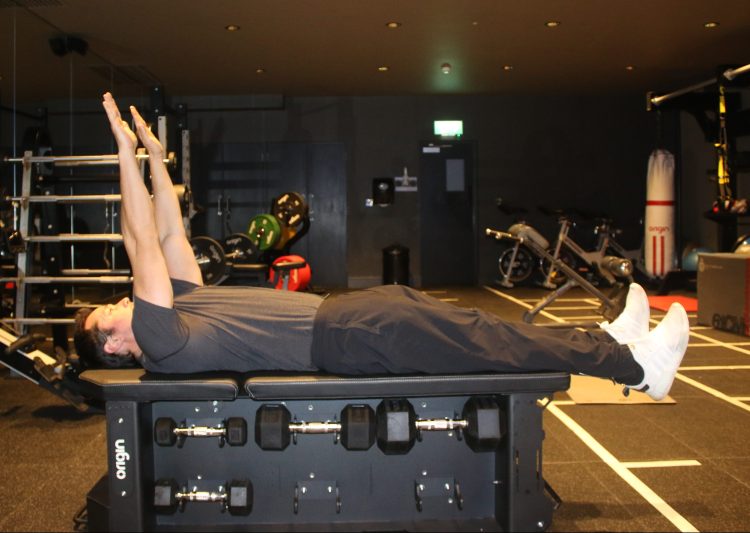
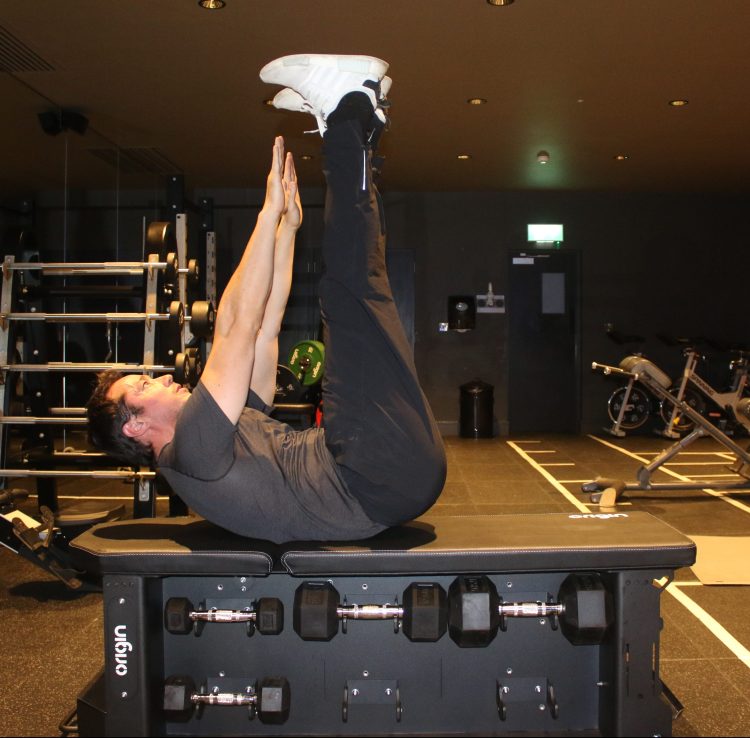
1d. V-Sit
Reps: 12-15
Rest: 15 secs, then move to 1e
How to perform a v-sit:
- Lie on the floor with your legs straight and arms straight above, pointing to the ceiling.
- Lift your head, shoulders, and torso up until the shoulder blades clear the floor while simultaneously raising the lower body (including your bum) off the floor as far as possible.
- Think about reaching towards your toes as your lower body raises from the floor.
PT tip: Think about your upper body including your torso, shoulders, arms and head moving as one unit up towards your legs to create the ‘V’ shape.
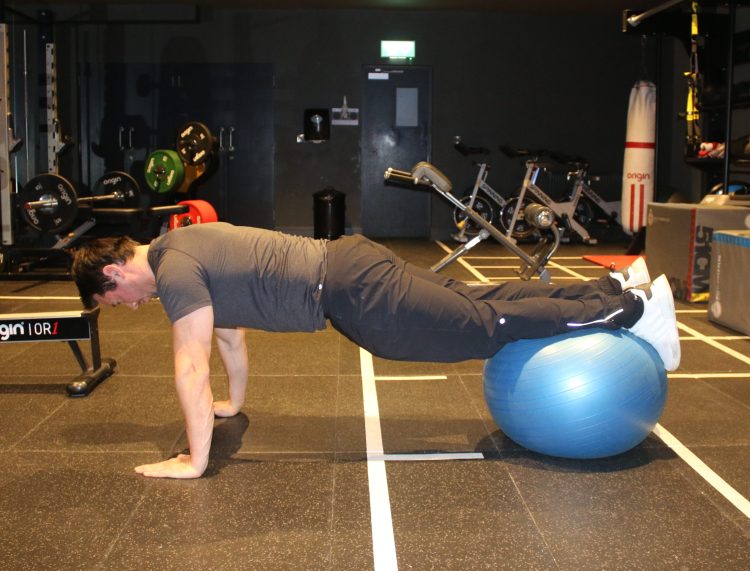
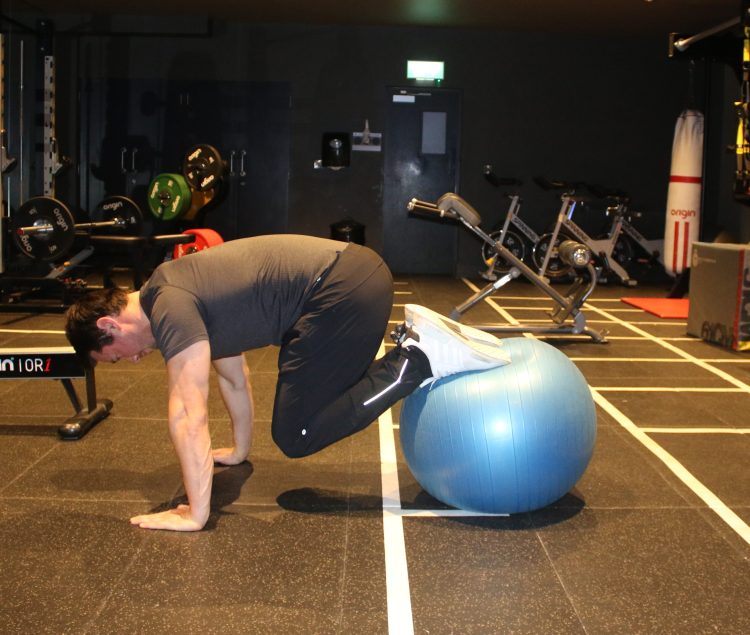 1e. Gym Ball Frog
1e. Gym Ball Frog
Reps: 12-15
Rest: 90 secs, then repeat 1a
How to perform a gym ball frog:
- Start in a gym ball plank position with ball on shins, arms straight, and spine neutral.
- Maximally bend hips by rolling knees to chest while keeping the ball on your shins.
- Extend the hips by returning to a plank position.
PT tip: Focus on curling the knees to the chest to achieve backward tilting of the pelvis.